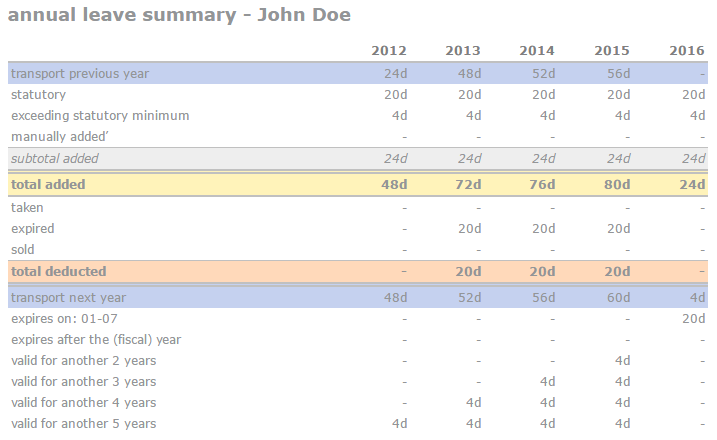Put theory into practice: the 2012 legislation on leave
Several years ago, employers collectively discussed the topic of ‘leave’. At the time, the restrictions and possibilities were very unclear, which led to some difficult circumstances from time to time. The 2012 legislation on leave was then established to create some more clarity.
In theorie: 8 depositories
The leave is divided into two parts: the statutory part – which is four times the number of hours the employee works per week – and the exceeding statutory minimum part, which can be determined by the employer. There are some general rules attached to both parts: the statutory part expires after one-and-a-half year, and the exceeding statutory minimum part expires after five years.
In practice, this system leads to eight different depositories of leave:
- The statutory part from this year;
- The exceeding statutory minimum part from this year;
- The statutory part from last year;
- The exceeding statutory minimum part which will come to expire in five years.
- The exceeding statutory minimum part which will come to expire in four years.
- The exceeding statutory minimum part which will come to expire in three years.
- The exceeding statutory minimum part which will come to expire in two years.
- The exceeding statutory minimum part which will come to expire in one year.
When an employee takes a vacation, the leave will be taken from the depository that will come to expire first. Makes sense? Absolutely. But in practice, this system leads to a whole lot of questions.
In practice: HR has some explaining to do
Ever since the new legislation has been introduced, HR managers have been spending a lot of time translating and explaining the ‘rules’. Now – nearly five years later – the depositories are all filling up, causing even more questions among employees. They cannot possibly make sense of the increasingly complicated excel files, which are becoming difficult to understand even for HR managers.
The solution: computerization
How can the leave data and depositories of every employee be streamlined into an efficient system? Administrative computerization offers the solution. All information on leave is incorporated in a registration system, relieving the HR manager of the impossible task of keeping up with it manually. Employees can view the current state of affairs regarding their leave themselves, which is shown in a clear and understandable way. What’s more is that there will be improved transparency: employees can keep track of everything themselves, which will eliminate any feelings of mistrust directed at HR!
Want to know more about the cloud-based leave registration system offered by Leavedays.com? Feel free to contact us!






